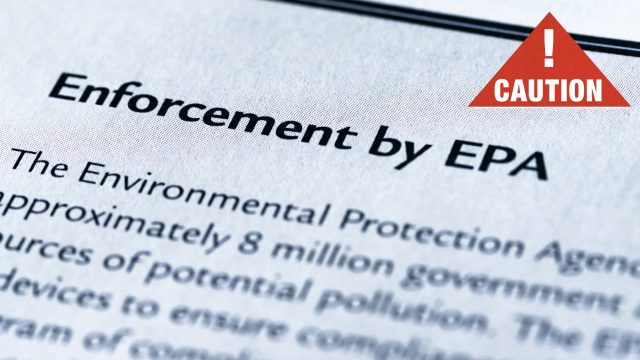Saylorville Water Treatment Plant Advances Sustainable Water Management
Introduction
On June 20, 2025, Central Iowa Water Works Executive Director Tami Madsen provided an in-depth overview of the Saylorville Water Treatment Plant located in Des Moines. The facility, capable of processing 10 million gallons per day, incorporates advanced reverse osmosis technology to enhance water purification. This initiative aligns closely with the United Nations Sustainable Development Goals (SDGs), particularly SDG 6: Clean Water and Sanitation, and SDG 9: Industry, Innovation, and Infrastructure.
Facility Overview
- Location: Des Moines, Iowa
- Capacity: 10 million gallons per day
- Technology: Reverse osmosis water treatment
- Equipment: Approximately 1,200 filters in operation
Technological Innovation and SDG Alignment
The Saylorville Water Treatment Plant employs cutting-edge reverse osmosis technology, which significantly improves water quality by removing contaminants and ensuring safe drinking water. This technological advancement supports multiple SDGs:
- SDG 6 – Clean Water and Sanitation: The plant ensures availability and sustainable management of water by providing high-quality treated water to the community.
- SDG 9 – Industry, Innovation, and Infrastructure: The integration of reverse osmosis technology demonstrates innovation in water treatment infrastructure, promoting sustainable industrial development.
- SDG 12 – Responsible Consumption and Production: Efficient water treatment processes contribute to sustainable resource management and reduce environmental impact.
Operational Details
- Extensive use of filters: The facility operates with 1,200 filters to maintain water purity.
- Advanced piping and equipment systems ensure continuous and efficient operation.
- Safety measures, including emergency showers, are in place to protect staff and maintain operational integrity.
Community and Environmental Impact
The plant’s operation is a critical component in promoting sustainable urban water management, directly contributing to the well-being of the Des Moines community. By ensuring access to clean and safe water, the facility supports public health and environmental sustainability, fulfilling the objectives of SDG 3: Good Health and Well-being, and SDG 11: Sustainable Cities and Communities.
Conclusion
The Saylorville Water Treatment Plant exemplifies a commitment to sustainable development through the adoption of innovative water treatment technologies. Central Iowa Water Works, under the leadership of Executive Director Tami Madsen, continues to advance efforts that align with global sustainability targets, ensuring reliable access to clean water while fostering environmental stewardship.
1. Sustainable Development Goals (SDGs) Addressed or Connected
- SDG 6: Clean Water and Sanitation
- The article focuses on the Saylorville Water Treatment Plant and the use of reverse osmosis technology to treat water, which directly relates to ensuring availability and sustainable management of water and sanitation for all.
- SDG 9: Industry, Innovation and Infrastructure
- The article discusses advanced water treatment technology (reverse osmosis) and infrastructure at the water treatment plant, highlighting innovation in water purification processes.
- SDG 3: Good Health and Well-being
- By improving water treatment, the article indirectly addresses public health by ensuring safe drinking water, which is essential for good health and well-being.
2. Specific Targets Under Identified SDGs
- SDG 6: Clean Water and Sanitation
- Target 6.1: Achieve universal and equitable access to safe and affordable drinking water for all.
- Target 6.3: Improve water quality by reducing pollution and minimizing release of hazardous chemicals and materials.
- Target 6.a: Expand international cooperation and capacity-building support to developing countries in water and sanitation-related activities and programs.
- SDG 9: Industry, Innovation and Infrastructure
- Target 9.4: Upgrade infrastructure and retrofit industries to make them sustainable, with increased resource-use efficiency and greater adoption of clean and environmentally sound technologies.
- SDG 3: Good Health and Well-being
- Target 3.9: Reduce the number of deaths and illnesses from hazardous chemicals and air, water and soil pollution and contamination.
3. Indicators Mentioned or Implied to Measure Progress
- SDG 6 Indicators
- Indicator 6.1.1: Proportion of population using safely managed drinking water services.
- Indicator 6.3.2: Proportion of bodies of water with good ambient water quality.
- SDG 9 Indicators
- Indicator 9.4.1: CO2 emission per unit of value added.
- Number and extent of water treatment plants using advanced technologies such as reverse osmosis (implied by the article’s focus on technology adoption).
- SDG 3 Indicators
- Indicator 3.9.1: Mortality rate attributed to unsafe water, unsafe sanitation and lack of hygiene.
4. Table of SDGs, Targets and Indicators
| SDGs | Targets | Indicators |
|---|---|---|
| SDG 6: Clean Water and Sanitation |
|
|
| SDG 9: Industry, Innovation and Infrastructure |
|
|
| SDG 3: Good Health and Well-being |
|
|
Source: desmoinesregister.com







